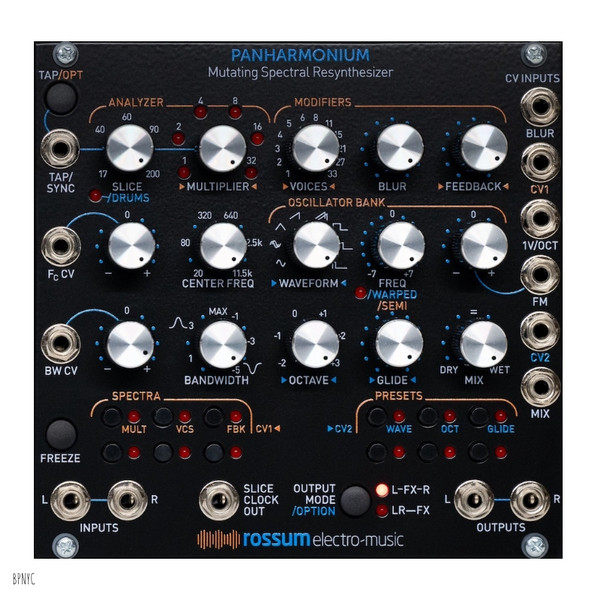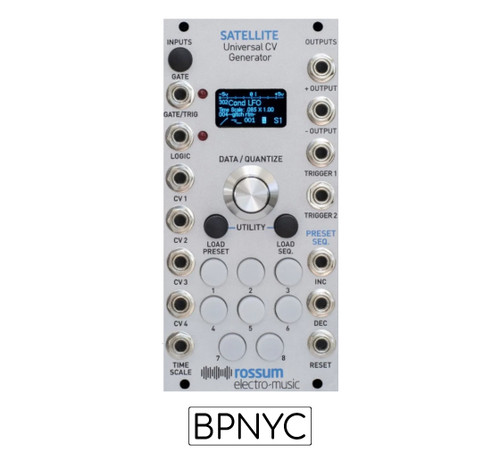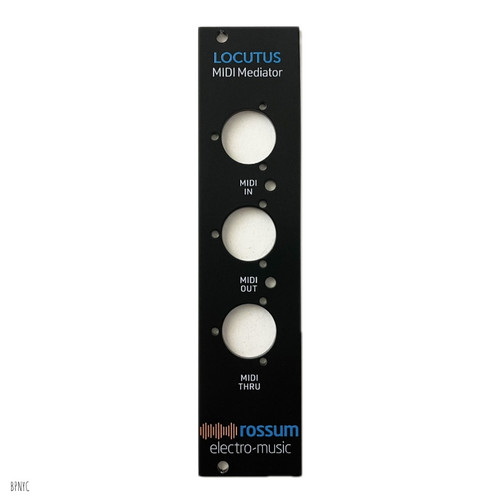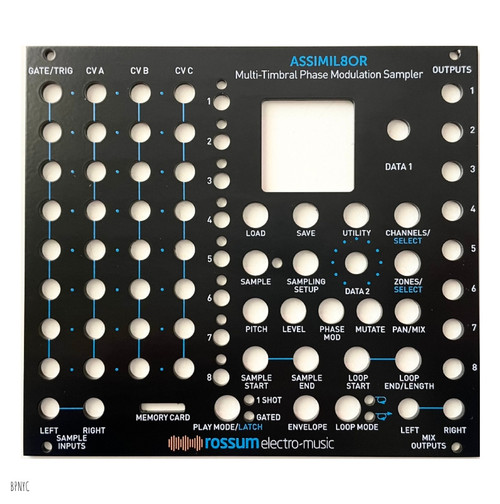Product Overview
Spectral Processor and Tone Generator
Rossum Electro-Music Software Architect Bob Bliss (who also, as it happens, fathered E-mu’s famed “EOS” Emulator Operating System) has created Panharmonium, a unique music and sound design tool that lets you analyze the spectral content of any audio signal and use that analysis to drive a bank of from 1 to 33 oscillators. Depending on various control settings, Panharmonium can accurately reproduce the input spectrum in real time or modify it in a multitude of wildly creative ways. All with an interface whose immediacy encourages performance and interaction.
Panharmonium input can be anything from a single oscillator to an entire mix (including vocals). From dense, swirling pads and drones that evolve with the input’s changing spectrum, to clock-syncable spectral arpeggiation, to as-yet unnamed harmonic effects, Panharmonium opens up an entirely new world of sonic possibilities.
Additionally, Panharmonium can take a snapshot of an instantaneous spectrum and use that as a complex harmonic oscillator, which can then be modified and modulated by all of Panharmonium’s other controls.
Panharmonium accomplishes its magic though a combination of functional submodules:
Spectral Analyzer
The Spectral Analyzer provides tools for defining the analysis process.
– The Slice parameter sets the rate at which the incoming audio is transformed to spectral data. It can be set by the Slice and Multiplier controls, the Tap button, or by an external clock signal. Very short slice times result in real-time spectral data, while longer times can create rhythmic spectral patterns.
– The Center Freq and Bandwidth controls (and associated CV inputs and attenuverters) control the range of frequencies to be analyzed. The Bandwidth control allows the selection of narrow to wide pass bands on the left side of the pot and narrow to wide notches on the right side of the pot. The ability to sweep the frequency and modify the bandwidth under CV control opens up a wide range of sonic effects.
– The Freeze button lets you freeze the spectral integrator, sustaining the currently analyzed spectrum.
Spectral Modifiers
These controls allow you to creatively modify the analyzed spectra.
– The Voice parameter lets you select from 1 to 33 oscillators to resynthesize the spectrum.
– The Blur parameter (and associated CV input) is a spectral lag processor that controls how quickly the spectrum can change.
– The Feedback control lets you route the resynthesized audio back into the entire processing chain for subtle or dramatic feedback effects. At its max, the output becomes self-sustaining, even if the input is removed.
Oscillator Bank
The Oscillator Bank resynthesizes the analyzed spectra.
– The Waveform parameter selects the oscillators’ waveform. In addition to the usual sine, triangle, sawtooth and pulse waveforms, two special crossfading sine and sawtooth waveforms are included.
– The Freq control lets you tune the oscillators over a +/-7 semitone range. The frequency is further controlled by the 1V/Oct input and the FM input and attenuverter.
– The Octave control, not surprisingly, shifts the pitch of the output by octaves.
– The Glide parameter sets the amount of polyphonic glide (i.e., each oscillator has its own glide circuit).
– The Mix control (and associated CV input) sets the balance between the original input audio and the resynthesized audio.
Optional Functions
A number of optional functions can be selected by using the Output Mode and Tap buttons.
– Holding the Output Mode button and adjusting the Slice control enables Drums Mode, which optimizes the spectral analysis for drums and other percussive inputs.
– Holding the Output Mode button and adjusting the Freq control enables Spectral Warping. In contrast to conventional frequency adjustment, where the harmonic relationships between the spectral elements are preserved, Spectral Warping shifts the harmonic elements individually, producing a variety of clangorous, swarming textures.
– Holding the Tap button and adjusting the Freq control quantizes the resulting frequency adjustments to semitones.
Spectra Memories and Presets
Panharmonium provides 12 user Spectra memories and 12 user Presets.
– The Spectra memories let you store up to 12 frozen slices. When selected, a spectrum (up to 33 oscillators wide!) replaces any live input and can have its pitch controlled by the 1V/Oct input and FM controls.
– A Preset is a snapshot of all of the module settings, along with the value of any CVs present at the moment the preset is saved.
Panharmonium is 26HP wide and 25mm deep.
Power requirements (max): 140mA +12V, 30mA -12V. Reverse polarity protected.
Panharmonium Quick Start Guide (PDF)
Panharmonium Manual (PDF)












